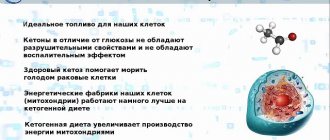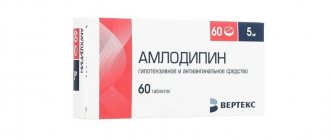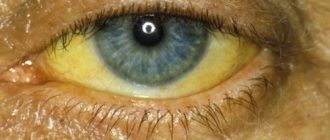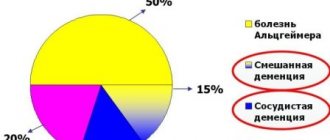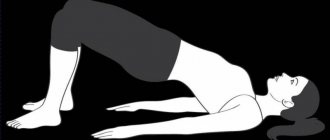Herpes is one of the most common infections on earth. Depending on the type of virus, it provokes various symptoms and diseases, including those affecting the joints. A rather atypical manifestation of infection is pain in the legs. Different types of herpes and the characteristics of its course cause distinctive symptoms: from a burning sensation on the skin to pain in the joints. Since the herpes virus does not cause leg problems very often, diagnosis of the musculoskeletal system often takes a long time.
Causes
The nature of the pain can vary completely, but all types can be caused by this infection. Your legs may hurt due to reactive arthritis. It occurs due to genital herpes. In this case, autoimmune diseases lead to damage to the joints of the lower extremities. If shingles occurs, then manifestations of the disease appear on the skin, and the epithelium becomes inflamed and sensitive. The same signs are characteristic of the generalized form of herpetic infection. When bubbles with clear liquid appear inside, as well as burning and swelling in the places where they occur, we can ascertain the presence of skin signs of the disease. They can occur as a result of chickenpox and complications of classic infections.
The hepatitis virus can infect the lymph nodes if the patient has severe immunodeficiency. Their inflammation can cause piercing pain in the limbs. Chronic fatigue syndrome causes muscle spasms due to the settling of the virus in the nerve fibers and their inflammation. In this case, pain may be present not only in the legs, but also in the lower back.
To begin treatment for this disease, the doctor needs to know what type of virus the patient has encountered. If the joints are damaged, then inflammation can be detected near them, pain is present, movements become limited, and the movable joints of the skeletal bones themselves, separated by a gap and covered with a synovial membrane, swell. The duration of the disease depends on the type of infection. It can last from half a month to a year, and in exceptional cases the period of its occurrence increases significantly. Sometimes the virus causes a complication in the form of inflammatory joint disease, which is characterized by a long, progressive course with temporary exacerbations in the active phase of the pathological process.
To cure arthritis, it is not necessary to go to the hospital. Therapy will take place in the hospital only in case of complications. The disease affects joints in different numbers and places. It all depends on the type of infection. Pain most often appears in the knees, ankles, and big toes of the lower extremities. External manifestations of infection may affect only one side of the legs or be symmetrical.
General symptoms
The first signs of shingles resemble symptoms of other types of herpes. In particular, at the initial stage of development of the disease in question, itching and burning occur in the place where the rash subsequently forms.
The affected area is mainly localized to:
- facial part of the head (both jaws and forehead);
- neck;
- back of the head;
- breasts;
- back;
- buttocks;
- shoulders;
- genitals.
The appearance of rashes in these areas is due to the fact that the virus, after entering the body, accumulates in the nerves of the brain and spinal cord. And when it is reactivated, it “descends” along a certain nerve, appearing on the surface of the skin.
At the initial stage of development, the presence of the disease is signaled by the following signs:
- headache;
- increased body temperature, which sometimes reaches 39 degrees;
- feeling of weakness and chills;
- disruption of the gastrointestinal tract;
- pain, itching and burning in the place where the rash will appear in the future;
- enlarged lymph nodes, accompanied by pain;
- other disorders of systems and organs with a severe nature of the disease.
These signs appear 2-4 days before the formation of skin rashes. Subsequently, the intensity of symptoms weakens.
The imminent appearance of a rash is indicated by red spots that form on the surface of the skin. Next, small vesicles with serous fluid appear, darkening after 3-4 days. In severe cases, blood clots appear inside such blisters. The vesicles themselves seem to migrate throughout the body over time: they appear in one place or another.
The danger of herpes zoster also lies in the fact that sometimes when the virus is reactivated, a skin rash does not appear. At the same time, the characteristic pain that occurs in the affected area worries the patient, which is why the pathology in question is often confused with heart disease and osteochondrosis.
Over time, the skin rashes open on their own and are replaced by dark crusts, which often go away without consequences.
Diagnostics
If the patient has external signs of the virus, the doctor, after examination, will send the person to get tested. But if only the joints are affected, then making a diagnosis can be difficult. After questioning the patient, the doctor palpates the lymph nodes. If this peripheral organ is inflamed, the pain intensifies when pressed, the color of the epithelium over the lymph node changes, and swelling occurs. If the lymph nodes are normal, the patient should undergo blood tests, urine tests, and a chlamydia test.
Symptoms of the disease
Herpes can affect the entire leg. Its symptoms spread to the lymph nodes and joints. External manifestations on the epithelium can come quite soon. The rash begins to heal and the skin stops itching 2 weeks after the first manifestations. When the active phase ends, areas appear on the epithelium that are slightly different in color from the rest of the body. This phenomenon is temporary and does not pose any danger.
With herpes, the patient almost always, in addition to symptoms on the skin, also has internal manifestations that may not be directly related to pain in the legs.
Periodically, high readings on the thermometer, acute cramps in the head, and signs of nausea and vomiting appear. There is a feeling of lethargy and fatigue, which is accompanied by loss of appetite. The joints hurt intermittently, but during exacerbations the painful sensations are accompanied by burning and itching. Therapy to combat the virus should be supervised by the treating doctor. Self-medication often only temporarily eliminates pain, and in advanced cases of the disease it will be absolutely useless.
Classics and more
This disease usually begins with pain - severe, shooting. The back or lower back hurts, or a sharp pain pierces the rib area. The person feels weak, nauseous, and sometimes the temperature rises. What's the matter? Renal colic? Cholecystitis? Appendicitis? Heart problems?
Everything becomes clear after a few days - fuzzy pinkish spots appear in the painful areas, and after about a day, colonies of watery blisters appear in their place. Gradually they dry out, forming crusts. This is the classic picture of herpes zoster.
“But, as with any disease, there are exceptions to the rules,” says dermatologist Marina Pitertseva . – For example, rashes may not appear at all, or blisters may be isolated, to which the patient, and sometimes the doctor, may not pay attention. But this does not mean that the disease is mild. Because the causative agent of herpes zoster - the herpes zoster virus - affects the nervous system, causing inflammation of the nerve nodes - ganglia. Therefore, the patient feels excruciating pain, which is especially intensified at night. For some it is aching, not letting up for a minute, for others it is paroxysmal, burning, similar to a lumbago.
With herpes zoster, a person feels painful symptoms along the nerve trunks, most often intercostal ones - in this area, unilateral rashes appear on the back. If the virus “infects” the trigeminal nerve, rashes appear on the face, on the nasal mucosa and even on the eyeball. In the auricular form, pinkish spots appear on and around the auricle, in the external auditory canal.
Treatment and medications
The medications most often prescribed by doctors are antiviral in nature and are based on acyclovir. To combat herpes, all types of medications are produced: from tablets to ointments and solutions that are administered by injection. To check the resistance of the virus to certain medications, tests are done in the hospital. When the medicine is selected, it begins to be taken under the further supervision of a doctor.
Herpes tends to become more resistant to certain drugs. To stop the spread of infection throughout the body, treatment is carried out comprehensively. It can be external and internal. Since the herpes virus cannot be completely eradicated from the body, drugs are aimed at weakening it and losing the ability to reproduce. This affects the ability of the virus to cause harm to the human body, and thanks to this, the joints become healthy again.
Risk group
There are many herpes viruses that damage the human body.
Among carriers of the virus, some people experience the disease more often and more severely than others. This is often due to the state of the immune system. A person who often suffers from colds and other diseases has a weakened defense system. This allows the virus to progress. Children are also at risk. They become infected with type 1, 2 or 3 of the virus much more often than adults.
Return to contents
Prevention of herpes for joint pain
The basis of preventing the herpes virus is maintaining a healthy immune system. It is this that has the main influence on the ability of the infection to spread throughout the body and multiply. Hygiene and healthy nutrition are what support the body's protective functions. And although all this will significantly reduce the ability of the virus to enter the active phase, such a risk still exists.
If this is not the first time a person has encountered herpes and has a predisposition to this disease, when the first signs appear on the epithelium, as a preventative measure, it is worth starting to take antiviral medications that will help fight neuralgia. But if they are ineffective, it is recommended to immediately undergo examination by a doctor. He will prescribe the correct dosage or change the medicine.
After the external signs have passed, do not forget about herpes. The virus can continue to develop in nerve fibers, causing various complications. If the infection is ignored and not treated, the disease can drag on for several years and cause constant pain. For prevention after suffering from colds and other diseases, it is worth taking medications that increase immunity.
[youtube.player]
Herpetic infection and its varieties penetrate all human organs and systems. Damage to the joints by the herpes virus most often occurs in patients with chronic diseases of the musculoskeletal system. If left untreated, the pathological process can destroy the joint and lead to disability.
Treat as soon as possible!
It is very important to start treatment for herpes zoster in the first 2-3 days after the rash appears - this is the only way to prevent complications. You cannot do without antiviral drugs - only they can stop the attack of the raging aggressor. Now there are many effective treatments, but each has contraindications, so a dermatologist must select them. The course of treatment is usually 5–7 days.
Sometimes it is necessary to examine the state of the immune system and additionally prescribe special medications that activate the body’s defenses. If you are concerned about severe pain, you should definitely consult a neurologist who will select analgesics. It is recommended to take vitamins A, E and group B. As for skin rashes, blisters and crusts are treated with antiseptic agents - a strong solution of potassium permanganate, brilliant green, but it is better to use special ointments that are used specifically for herpes rashes. This is important to prevent the addition of a secondary bacterial infection.
To relieve itching, you can apply ice packs prepared with chamomile infusion to the rash site. After the blisters have dried, the doctor may prescribe ointments containing antibiotics. There is no need to be afraid of this: when applied externally, they almost do not penetrate into the blood. Antihistamines are used to relieve swelling, and eye drops are prescribed for eye lesions. After the acute period of the illness has passed, the doctor may prescribe physiotherapeutic procedures, such as ultraviolet irradiation.
During the acute period of illness, you should not take a bath - healing of wounds on the skin may take longer. Use a hand shower to avoid getting water and especially gel or soap on the rash.
Why do joints hurt with herpes?
Once the virus enters the body, it does not immediately provoke the development of symptoms. It is located in the ganglia and, when the immune system is weakened, can be aggressive. Chronic diseases of the musculoskeletal system worsen in autumn and spring, and during these same periods a general weakening of the body is observed. All this contributes to the development of a virus that affects the structure of the joint tissue, provoking inflammatory and degenerative processes accompanied by pain. The lesion can affect any joint and elements of the auxiliary apparatus (ligaments and tendons). Most often, herpes affects the large joints of the lower extremities, with the development of severe pain that is not relieved by classical treatment.
The effect of the virus on the body is to disrupt the functioning of almost all systems. In addition to the musculoskeletal system, it affects the skin, nails, mucous membranes, and internal organs. There are many symptoms associated with this. The following signs are considered the most common:
- conjunctivitis;
- urethritis;
- mouth ulcers;
- skin papular lesions;
- disturbances in the functioning of the heart associated with damage to its membranes;
- elevated temperature;
- soreness of the skin and subcutaneous tissue;
- muscle pain;
- lymphadenitis;
- intoxication of the body.
Return to contents
Diagnosis of the disease
It is not immediately possible to determine a viral infection in joint pain. This is due to the fact that the inflammatory process begins to be treated with NSAIDs and other medications that are not related to the virus. The ineffectiveness of such therapy makes us think about the nature of its occurrence. Then diagnostics are carried out using the following methods:
Blood tests must be taken to determine the presence of inflammation.
- PCR and ELISA. Specific studies of blood, urine, saliva and other biomaterials, which make it possible to determine the presence of virus DNA and the presence of antibodies to it.
- General blood analysis. Indicates an inflammatory process.
- X-ray or MRI diagnostics. Used to determine the violation of tissue integrity and the extent of the pathological process.
- Blood test for C-reactive protein.
- Examination of synovial fluid.
Return to contents
Prevention
For prevention, it is useful to follow these recommendations:
• Observe the rules of personal hygiene: use only your own hygiene products, wash your hands after being in public places. • Do not contact a sick person. • Strengthen your immune system, starting with a healthy diet. Eat well to get the full amount of vitamins and minerals. Include fruits and vegetables in your regular diet. • Maintain a healthy sleep schedule and get enough sleep. • Play sports, get used to hardening, and regularly walk in the fresh air.
Treatment of the disease
The herpes virus can destroy a joint in the shortest possible time, so therapy begins immediately after the diagnosis is made. The treatment is long and complex. The treatment regimen will include the following groups of drugs:
The last resort in treatment is surgery and replacement of the damaged joint.
Additional therapy includes the use of traditional medicine recipes, physiotherapeutic methods and therapeutic exercises, which will improve blood supply to joints and muscles, reduce pain, facilitate joint movements, and restore amplitude. Traditional healers suggest drinking a decoction of oak bark 0.5 cups 5 times a day to remove infection from the body, and also lubricating the mucous membranes of the mouth and nose with lemon oil, which will also speed up the healing process.
A herpetic infection may not manifest itself for some time, but at the same time have a negative effect on the body. An untimely diagnosed problem leads to the spread of the process. Among the severe complications of a viral infection, damage to the intestinal mucosa with the development of bleeding, pericarditis, clouding of the cornea and herpetic encephalitis can be identified. But the most difficult and dangerous complication is generalized herpes, which affects all organs and systems.
[youtube.player]
Infections caused by herpes viruses are extremely common among people in any country. Different types of herpes can cause different forms of the disease.
Most people have experienced one or another manifestation of a viral infection caused by herpes type 1 or 2. However, these pathogens can also cause rather atypical variants of the disease.
Pain in the leg or lower back due to herpes is uncommon. However, when these symptoms accompany the infection, and other musculoskeletal diseases have been excluded, a connection between the pain and the herpetic infection should be looked for.
Why does my leg or lower back hurt with herpes?
Antiviral treatment of elderly people with herpes zoster
The need for antiviral therapy in the elderly is difficult to dispute, because adequate treatment of herpes zoster does not allow complications. Antiherpetic therapy involves rapid healing of all ulcers, reduces pain and helps improve general condition. Dosage and treatment are prescribed only by a specialist, taking into account all the individual characteristics of inflammatory processes and simultaneously occurring diseases. The average duration of treatment is no more than 10 days, but sometimes it lasts up to 2 weeks.
For skin diseases, electrophoresis is often prescribed.
Today, the drug Epigen gives sufficient effect in the treatment of herpes in older people. It consists of glycyrrhizic acid. The medicine has anti-inflammatory, antiviral, immunostimulating, antipruritic effects. The gangrenous form with the addition of a bacterial infection requires the prescription of antibiotics with a broad spectrum. Quite often, immunomodulatory drugs, physical therapy procedures, or vitamin therapy are prescribed.
Treatment options for rashes vary. The first method is brilliant green, the second is boric acid, the third is castellan, the fourth is fucorcin, the fifth is potassium permanganate. This treatment has a drying effect and must be used with caution to avoid chemical burns, which will worsen the overall condition of the skin. According to another opinion, it is impossible to smear rashes with such substances, and the best option is to use antiviral, antiherpetic creams, ointments, and sprays.


